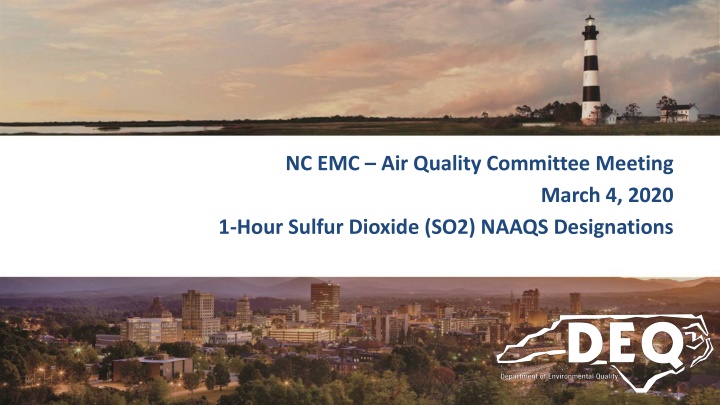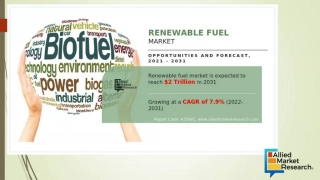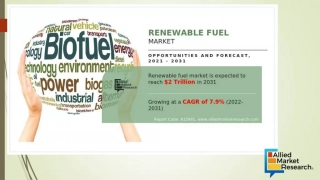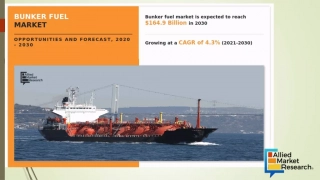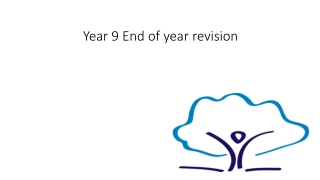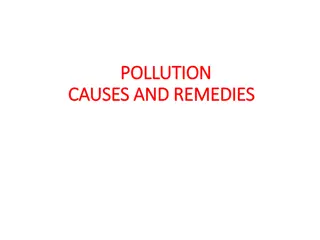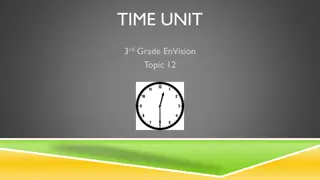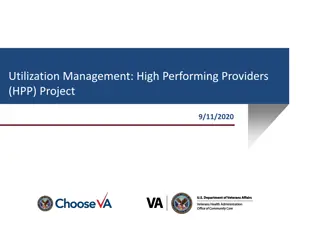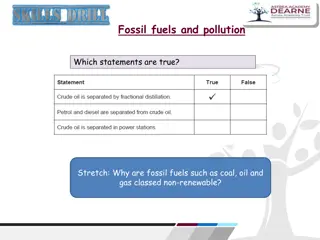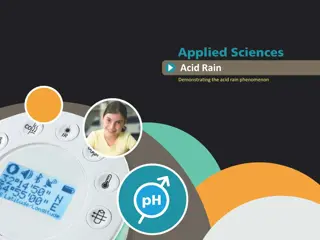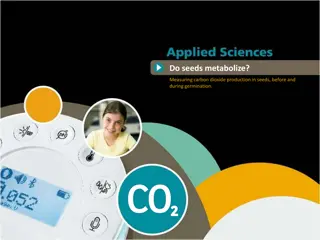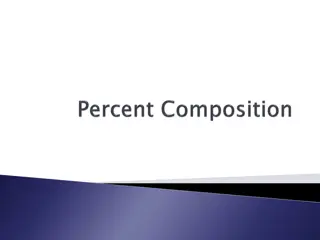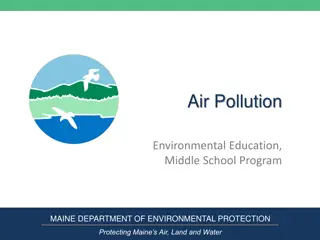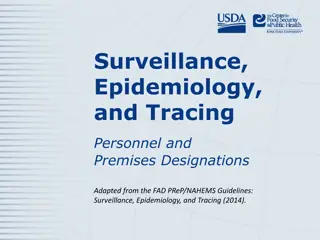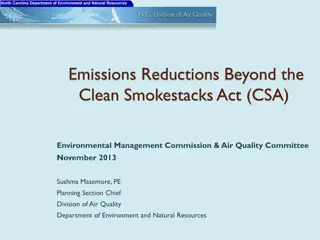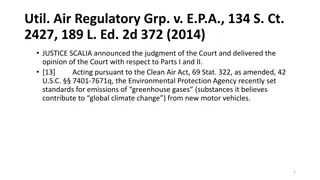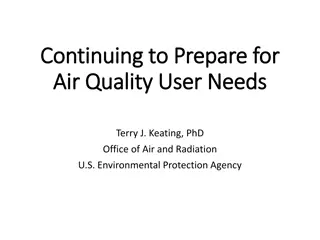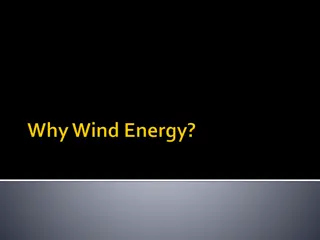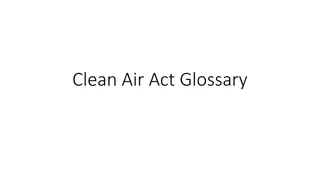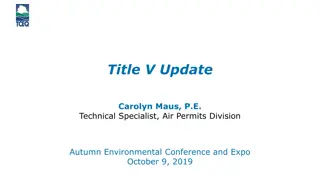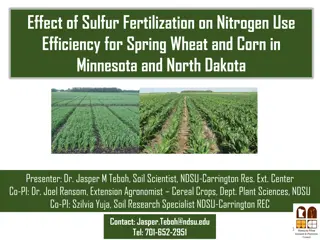1-Hour Sulfur Dioxide NAAQS Designations
The content discusses the National Ambient Air Quality Standards (NAAQS) for 1-hour sulfur dioxide (SO2) concentrations, including historical revisions, deadlines for EPA designations, and Data Requirements Rule (DRR) rounds. It covers the EPA's efforts to monitor and regulate SO2 emissions to improve air quality.
Download Presentation

Please find below an Image/Link to download the presentation.
The content on the website is provided AS IS for your information and personal use only. It may not be sold, licensed, or shared on other websites without obtaining consent from the author.If you encounter any issues during the download, it is possible that the publisher has removed the file from their server.
You are allowed to download the files provided on this website for personal or commercial use, subject to the condition that they are used lawfully. All files are the property of their respective owners.
The content on the website is provided AS IS for your information and personal use only. It may not be sold, licensed, or shared on other websites without obtaining consent from the author.
E N D
Presentation Transcript
NC EMC Air Quality Committee Meeting March 4, 2020 1-Hour Sulfur Dioxide (SO2) NAAQS Designations
Data Requirements Rule (DRR) Round 4 Designations for 2010 1-Hour Sulfur Dioxide (SO2) NAAQS Department of Environmental Quality 2
2010 1-Hour SO2 NAAQS History On June 22, 2010 (75 FR 35520), EPA revised the primary National Ambient Air Quality Standards (NAAQS) for SO2 (40 CFR 50.17) 75 parts per billion (ppb), measured as 3-year average of annual 99th percentile of 1-hour daily maximum concentrations (40 CFR 50.17) State designation recommendations to EPA within 1 year after NAAQS is revised (Clean Air Act (CAA) 107(d)(1)) EPA designates areas within 2 years (CAA 107(d)(1)) State infrastructure SIPs due within 3 years (CAA 110(a)) For nonattainment areas, SIPs due 18 months after designation (CAA 191) EPA to revoke primary annual and 24-hour SO2 NAAQS 1 year after designation for revised NAAQS (40 CFR 50.4(e)) 3
2010 1-Hour SO2 NAAQS History On August 5, 2013, EPA promulgated nonattainment designations for areas where existing monitoring data (2009 2011) indicated violations of the NAAQS (78 FR 47191) (Round 1) North Carolina had no violating monitors, but EPA deferred designations to a later date. Revised NAAQS presented monitoring, modeling, and implementation challenges due to change to 1-hour averaging time EPA worked with stakeholders to develop implementation strategy 4
2010 1-Hour SO2 NAAQS History March 2, 2015 court order set deadlines for EPA to complete designations for all remaining areas in the country in up to 3 additional rounds By July 2, 2016 (Round 2) Areas with NAAQS violation based on 2013 2015 monitoring data Areas with stationary source that in 2012 emitted: >16,000 tons SO2, or >2,600 tons SO2 and average emission rate 0.45 pound SO2/million British thermal units (lb/MMMBtu) By Dec. 31, 2017 (Round 3) Based on modeling demonstration By Dec. 31, 2020 (Round 4) All remaining areas based on monitoring 5
Data Requirements Rule (DRR) August 21, 2015 (80 FR 51052), EPA issued Data Requirements Rule (DRR) (40 CFR 51.1200) Deadlines and requirements for submission of air quality information to EPA: Jan. 15, 2016: List of sources (or cluster of sources) with actual SO2 emissions 2,000 tons per year (tpy) July 1, 2016: Characterize SO2 concentrations by area: Modeling demonstration due by Jan. 13, 2017 Federally enforceable emission limitations by Jan. 13, 2017 to limit emissions to <2,000 tons Monitoring near sources to establish 3-year design value (2017 2019) 6
NC Designation Recommendations (Round 2) Brunswick County CPI Southport cogeneration facility met Round 2 criteria NCDAQ recommended all townships in county be designated attainment based on modeling, and a federally enforceable SO2 emission limitation for CPI EPA designate all townships unclassifiable Not enough information available at the time to designate the area attainment (81 FR 45039, July 12, 2016) NCDAQ will need to submit a technical demonstration and request to EPA to reclassify the area to attainment 7
NC Designation Recommendations (Round 3) NC s Recommendations submitted to EPA on Jan. 13, 2017 (Round 3) All townships recommended for designation as attainment: Emission Source-Oriented Modeling: 4 facilities Emission Source-Oriented Monitoring: 1 facility (2013 2015 data) Non-Source Oriented Ambient Air Monitoring: 5 counties All remaining areas contain no or low emitting SO2 sources EPA agreed with NC s recommendations (83 FR 1098, Jan. 9, 2018) Classified as attainment/unclassifiable 8
Round 4 Designations Three NC townships remain to be designated by EPA 2017-2019 monitoring data collected for: Duke Energy Asheville, Limestone Township, Buncombe County Duke Energy Roxboro, Cunningham Township, Person County Evergreen Packaging / Blue Ridge Paper Products LLC Canton, Beaverdam Township, Haywood County Department of Environmental Quality 9
Ambient Air SO2 Monitoring Results (2017 2019) 99th Percentile (ppb) 3-Year Design Value (2017-2019)* Percent of NAAQS (75 ppb) Monitoring Site ID Facility Name Duke Energy Asheville Duke Energy Roxboro County / Township 2017 2018 2019* 370210037 Skyland Buncombe / Limestone 16.6 9.8 7.7 11 15% 371450004 Semora Person / Cunningham 31.1 23.4 40.9 32 43% Blue Ridge Paper 370870013 Canton Haywood / Beaverdam 206.8 213.4 34.8 153 204% * This is a preliminary value until certified on or before May 1, 2020). Department of Environmental Quality 10
Source-Specific SIP for Blue Ridge Paper Products Facility Status: From 2017 to 2019, significant investment in process changes and upgrades to SO2 control equipment reduced annual emissions 93% (5,470 tons) For 2019, ambient monitor shows 99th percentile SO2 concentration is 34.8 ppb (46% of NAAQS) Facility demonstrated through modeling that permitted SO2 emission rates in Title V permit are protective of the NAAQS Department of Environmental Quality 11
Source-Specific SIP for Blue Ridge Paper Products Round 4 Designation Guidance (Sept. 5, 2019): For cases like this, EPA allows State to develop source-specific SIP for facility to make SO2 emission limitations permanent (i.e., can only be changed via SIP revision) and federally enforceable Once EPA approves the SIP, NC is requesting EPA to: Designate Beaverdam Township unclassifiable/attainment Approve the Good Neighbor elements in NC s infrastructure SIP (CAA 110(a)(2)(D)(I)(I)) Department of Environmental Quality 12
Round 4 Designations Schedule Milestone Date (2020) May 1 May 1 NC certifies 2019 SO2 monitoring data NC submits designation recommendations to EPA EPA notifies NC of modifications to recommendations (120-day letters) EPA 30-day public comment period NC submittal of additional information to EPA EPA finalizes SO2 area designations Aug. 13 Aug. 26 Sept. 25 Oct. 16 Dec. 31 Source: Area Designations for the 2010 Primary Sulfur Dioxide National Ambient Air, USEPA/Office of Air Quality Planning and Standards, September 5, 2019. 13
NC Website Sulfur Dioxide (SO2) Designation History https://deq.nc.gov/about/divisions/air-quality/air-quality- planning/attainment/designation-history/sulfur-dioxide-designation- history 14
Contact Information Randy Strait Planning Section Chief NCDEQ, Division of Air Quality 919-707-8721 randy.strait@ncdenr.gov Department of Environmental Quality 15
